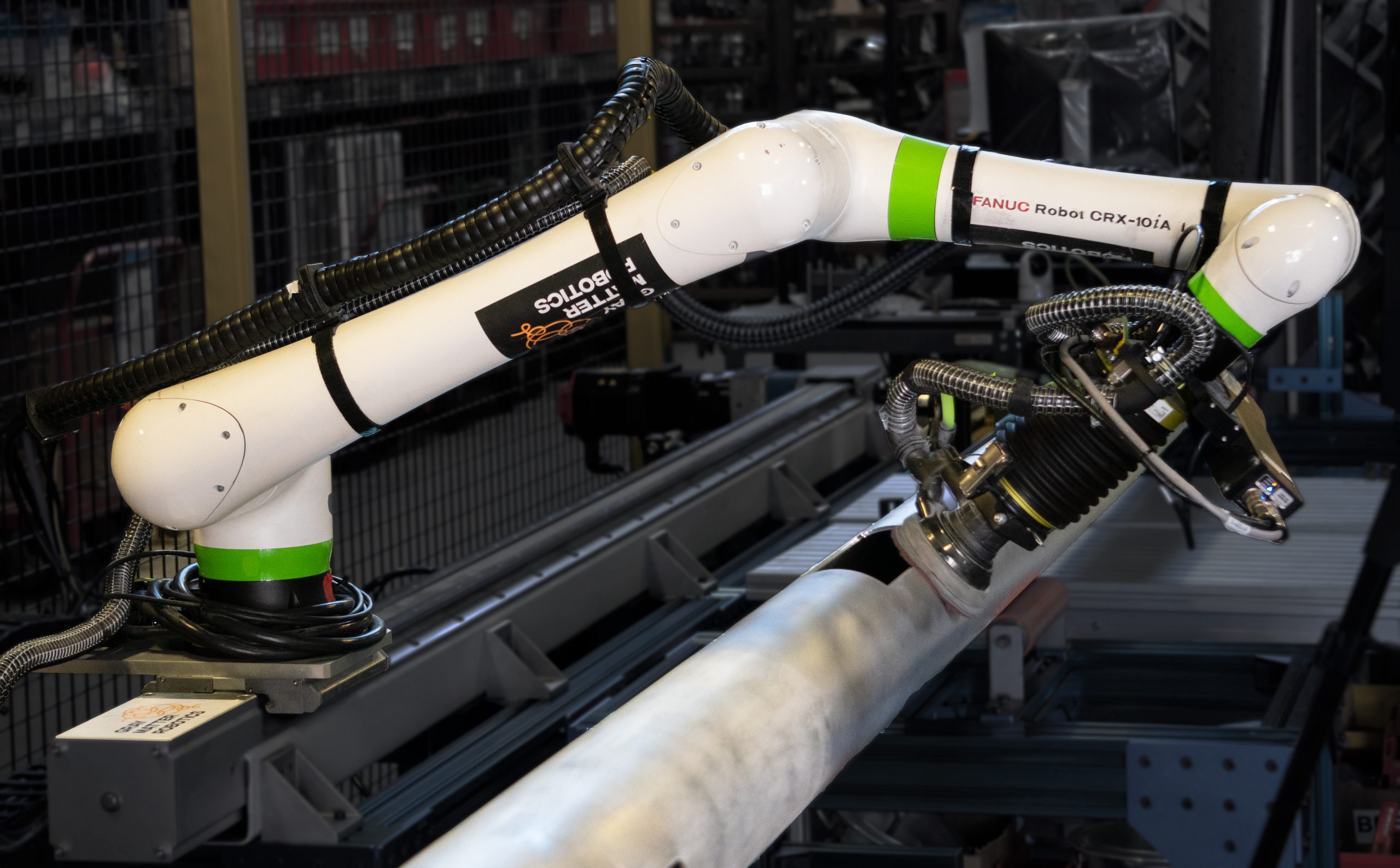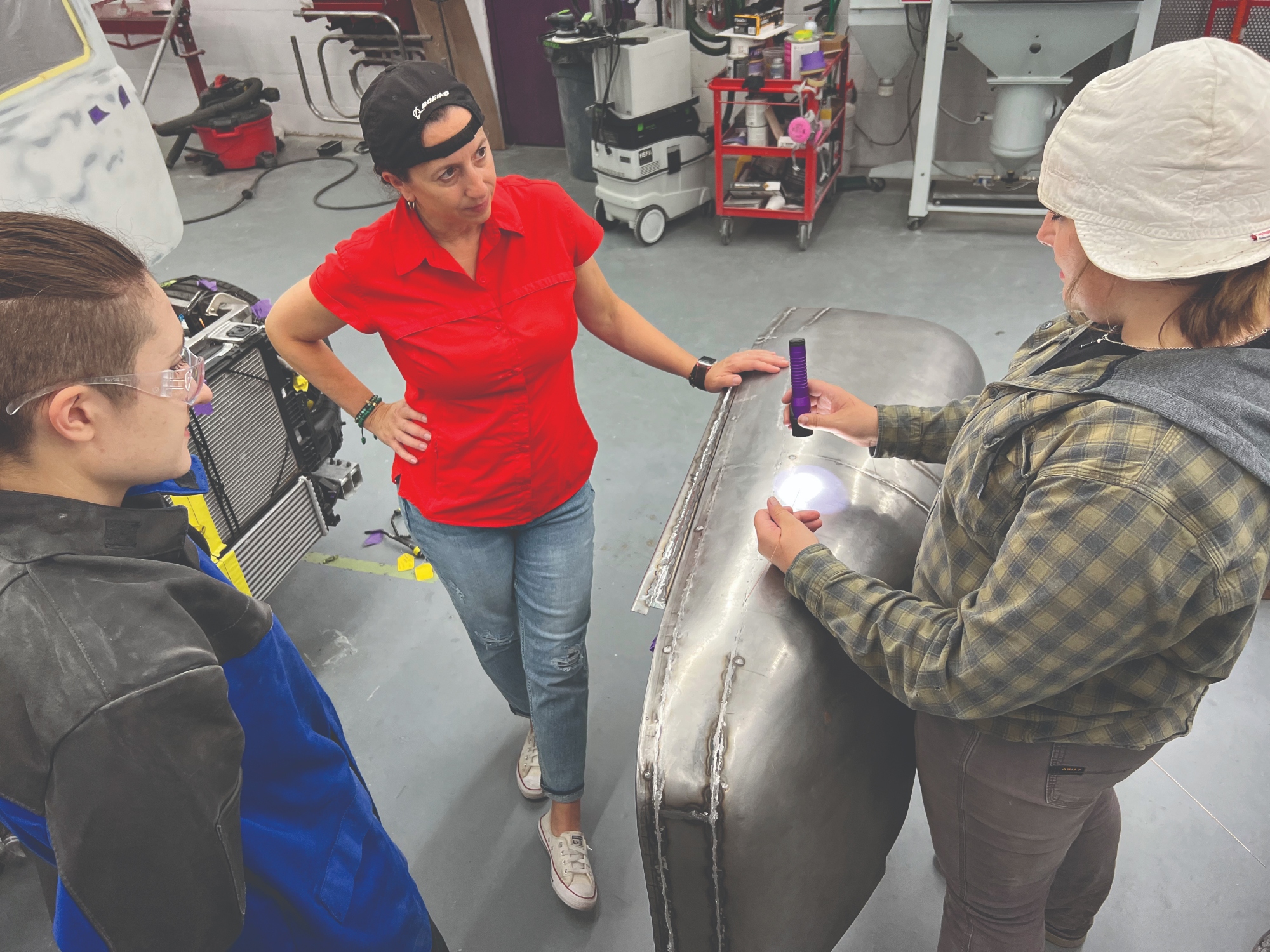Building a Future-Ready Workforce: The Role of 4IR Technologies in Reshaping the Metalworking Talent Landscape

Manufacturers understand that their businesses won’t grow if their workforces don’t grow along with them. That’s why the talent shortage in the metal fabrication industry continues to be a pressing concern — and three-quarters of respondents in the National Association of Manufacturers’ 2023 First Quarter Manufacturers’ Outlook Survey cite attracting and retaining a skilled labor force as a “primary business challenge.”
Increasingly, metal fabricators are turning to automation as a solution to this persistent problem. By integrating cutting-edge technology into all aspects of their operations, companies do more with less and help ease the physical burdens on older workers, allowing them to extend their careers — in addition to making manufacturing a more attractive career option for a younger generation that’s fluent in all things tech.
But automation isn’t the only tool available to manufacturers. There are many other technologies that the industry can adopt as part of the Fourth Industrial Revolution (4IR), also called Industry 4.0. Explore how 4IR can transform a business — and its workforce.
The Current Workforce Challenge in Metal Fabrication
There are multiple factors responsible for the talent churn in manufacturing, according to the National Institute of Standards and Technology at the Department of Commerce:
- Older employees are retiring, and there aren’t enough skilled workers to take their place.
- The rapid development of new technology, in absence of accompanying training, can leave workers without the necessary skill set to get hired or perform their job duties.
- Younger people entering the workforce are unaware of the industry’s career prospects.
- Hiring departments have not acclimated to these shifts, which makes it difficult to hire or retain employees.
And the May 2023 jobs report from the Bureau of Labor Statistics adds a new wrinkle: While most sectors either gained or retained jobs for the month, manufacturing saw a slight dip, with a net loss of 2,000 jobs. It’s a complex labor market, but one that can be easier to navigate with automated systems.

“The talent shortage has become an important challenge for organizations, which has led them to evolve their business strategies and lean toward creative solutions such as process automation or simplification.”
– Pedro Castillo, Managing Director for Mexico and Latin America at Therma-Tron-X, Inc./TTX Mexico/MTX Servicios
Companies that leverage automation can fill in gaps caused by labor shortfalls, streamlining operations so employees don’t need to perform repetitive chores but can instead focus on knowledge-based tasks. Automated systems can also reduce the physical burdens of certain manufacturing roles, so older workers can stay on the job longer. Companies can reap the same benefits when they utilize other forms of 4IR tech.
What Is 4IR and What Can It Do for Manufacturing?
The Fourth Industrial Revolution refers to the integration of digital advancements —including robotics, artificial intelligence (AI) and automation — into traditional industries. 4IR has sparked a transformation in manufacturing that continues to evolve as new technologies are introduced.
There are significant opportunities to enhance productivity and efficiency in metal fabrication. As noted, automated machines excel at repetition, whether that’s welding, precision cutting or assembly. Robotic technology can be crucial in complex processes, performing intricate tasks with both speed and precision; collaborative robots (cobots) can also work alongside humans for improved productivity. And AI algorithms enable machines to analyze vast amounts of data so they can perform quality control, predictive maintenance, safety alerts and other functions.
These advancements are also essential for overcoming the built-in challenges of the talent pipeline and growing the skilled labor pool.

“Technology is helping us recruit smarter and faster, develop [workers’] skills quickly and engage their interests and familiarity of tech to maximize their value. Automation is helping to maximize the value added of employees through Augmented Reality and keeping them safer with Virtual Reality.”
— Dean Phillips, DTM SME, president of Longevity Industries and innovation strategist/sales engineer at LINK Systems
4IR can be a game changer for companies looking to compensate for a reduced workforce while staying competitive. Technology can fill in for many roles, decreasing the reliance on human employees. It can also cut down on costs by reducing downtime, minimizing scrap waste, preventing equipment breakdowns and tracking inventory, among many other benefits. And it does all this while increasing output and maintaining a high level of quality. Successful 4IR integration, however, depends on the people operating these new systems, which is why training is so important.
The Necessity of Skill Building
By upskilling and reskilling workers, companies can ensure a seamless transition to 4IR-based processes, with minimal interruption. Plus, employees will gain more confidence as they learn how to harness this new technology and advance their career development.

“Training support and training encouragement are going to be key. Employees do not always have the option to ‘buy-in’ to technology adoption, but they need to know that their line leaders are going to be adequately trained and they are going to be trained.”
— Lara Threet, program coordinator and instructor in industrial technology at Mississippi State University
Threet also acknowledged that “change is scary” and employees need to know that they can succeed. “Technology adoption does not always mean job loss,” she said. “It can be an opportunity for job growth.”
4IR in Action: How Robotic Sanding Transformed BEGA’s Manufacturing Operations
BEGA North America, a California-based metal fabricator specializing in interior and exterior light fixtures for architectural applications, is a prime example of how manufacturers can successfully address workforce issues with 4IR. Sanding operations are an integral part of their processing, but that poses certain challenges:
- Sanding is ergonomically taxing and tedious, which made it difficult to recruit talent during the labor shortage. It took the HR team multiple weeks to fill sanding operator positions, causing delays and constraining capacity.
- Surface finishing processes, in general, have a very high labor churn. Even after a position is filled, a worker may quit soon after to take a less physically demanding job. Two to three weeks of onboarding and training adds costs, and all of those resources are wasted if an employee quits.
- There is a high probability of injury. BEGA experienced one or more worker injuries every year. This incurs a significant cost and is detrimental for employee morale.
Robotic sanding was an obvious solution to address the labor shortage and safety problems. However, BEGA was concerned about the programming efforts and financial investment. Deploying robots in high-mix applications meant that they would need to be programmed for every new part. The in-house robot programmers this required would increase costs. There was also the question of whether robotic sanding would deliver the right surface quality.
The company found the 4IR solution it needed with Scan&Sand™ from GrayMatter Robotics:
- Scan&Sand does not require any programming. It simply scans the part and uses that data to automatically program the robot.
- GrayMatter Robotics configured the technology with BEGA’s process parameter preferences, and it delivered the desired quality consistently.
- A part type could be switched out in just a few minutes, so Scan&Sand could be used in high-mix applications.
- Scan&Sand fit in BEGA’s existing sanding space without requiring an upgrade to the facility.
- The GrayMatter Robotics team trained the sanding line operators within a day to operate the robotic cell.
Scan&Sand™ performs at a speed faster or comparable to that of an experienced human operator. Depending on the part geometry and accessibility of the tool available for the robot, it can sand more than 90% of the surface area. There can be some challenging geometric features that the human hand can reach with sandpaper that the robot may not be able to with today’s robotic tools. BEGA’s operational cost has reduced since deploying Scan&Sand™, and both managers and workers are satisfied with the results.
“Our biggest concern was that our part mix is very high,” said Jon Coners, Sr., manufacturing manager at Bega North America. “It seemed like a very daunting task to automate such operations. Scan&Sand™ has the ability to work on a component or a group of components and have really [an] only one-button operation that is very simple,” he said. Coners added that users don’t have to worry about having a fixed setup; “you can move parts around, and the robot will look again! This was our first foray into robotics,”
“We had to have a partner that will be there for us, and GrayMatter has stepped up to the plate. GrayMatter is a partner with us, not just a vendor.” Jeff Pickney, Sanding Technician noted, “I can now go back home and lift my daughter. My shoulders don’t hurt anymore.”
Find Smart Future Ready Workforce Strategies at FABTECH
At FABTECH, you can meet labor challenges head on with the latest innovations and insights:
- Explore new robotic, automated, AI and other 4IR solutions from 1,400 top suppliers on the show floor.
- Get key takeaways from industry experts during the Leadership Exchange: Building the Future Workforce panel discussion.
- Gain practical strategies you can apply to your business with the Automation, Robotics, Smart Manufacturing, and Workforce Development conference tracks.
Metal fabricators who embrace cutting-edge 4IR, invest in employee training and find visionary tech partners will thrive in this evolving landscape with a strong, skilled, future ready workforce.
Stay competitive at FABTECH, taking place in Chicago, Sept. 11-14. Register today, then find the conference sessions that align with your goals.


















